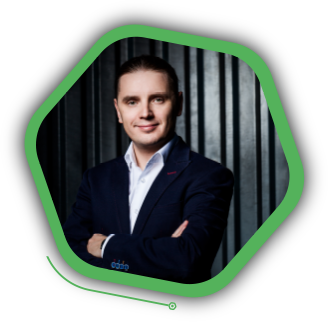Examples from various verticals
Startup – rapid growth

- Situation:
- An increase of an order or several orders of magnitude
- Many dimensions of change (amount of data, sources, teams)
- Organisational dilemmas:
- No own data team
- Democratization of the management process
- The way of organizing the DATA team
- Technological challenges:
- Tool selection
- Spagetti architecture
- Strategy of continuous rapid development of core systems vs. data flow
- Lack of technological competences on the part of the data/data consumption team
Architecture – starting point

- Team
- Total <30 people
- Data team ~ 3 people (DA only)
- Needs
- Transferring existing reports from the production (transactional) database to analytical solutions
- Organisation
- Founders created and maintained existing analytics, first people hired for analytics
- Founders created and maintained existing analytics, first people hired for analytics
Architecture – step 1

- Team
- Total <60 people
- Data team ~ 5 people
- Needs
- Rapid increase in demand for reporting in every field
- One truth
- Organisation
- First plans to build a scalable future-proof data infrastructure
- First plans to build a scalable future-proof data infrastructure
Architecture – step 2

- Team
- Total <150 people
- Data team ~ 15 people
- Needs
- The multitude and complexity of discovery analyses
- Effective data team management
- Organisation
- Central data engineering team providing data for all functions
- A distributed analytical team supporting individual functions
Architecture – step 3

- Team
- Total >150 people
- Data team ~ 20 people
- Needs
- Multidimensional analytical organization supporting all functions + scalable data infrastructure
- Reporting and notification mechanisms close to real time
- Organisation
- Central data engineering team providing data for all functions
- An analytical team dedicated to specific functions
Startup – rapid growth

- ORGANISATION:
- DATA “interim” team for the period of building your own organization
- centralized engineering team (3-5 people)
- Dynamically allocated analytical team (2-10 people)
- data model – event based approach
- gradual transfer of responsibilities to employed employees
- OPUTCOMES:
- modern infrastructure ready for multiple scale increases
- automated and orchestrated architecture of DATA solutions
- started processes and organization of work of teams data
- delivered analytical needs
- all over the course of 12 months of cooperation






